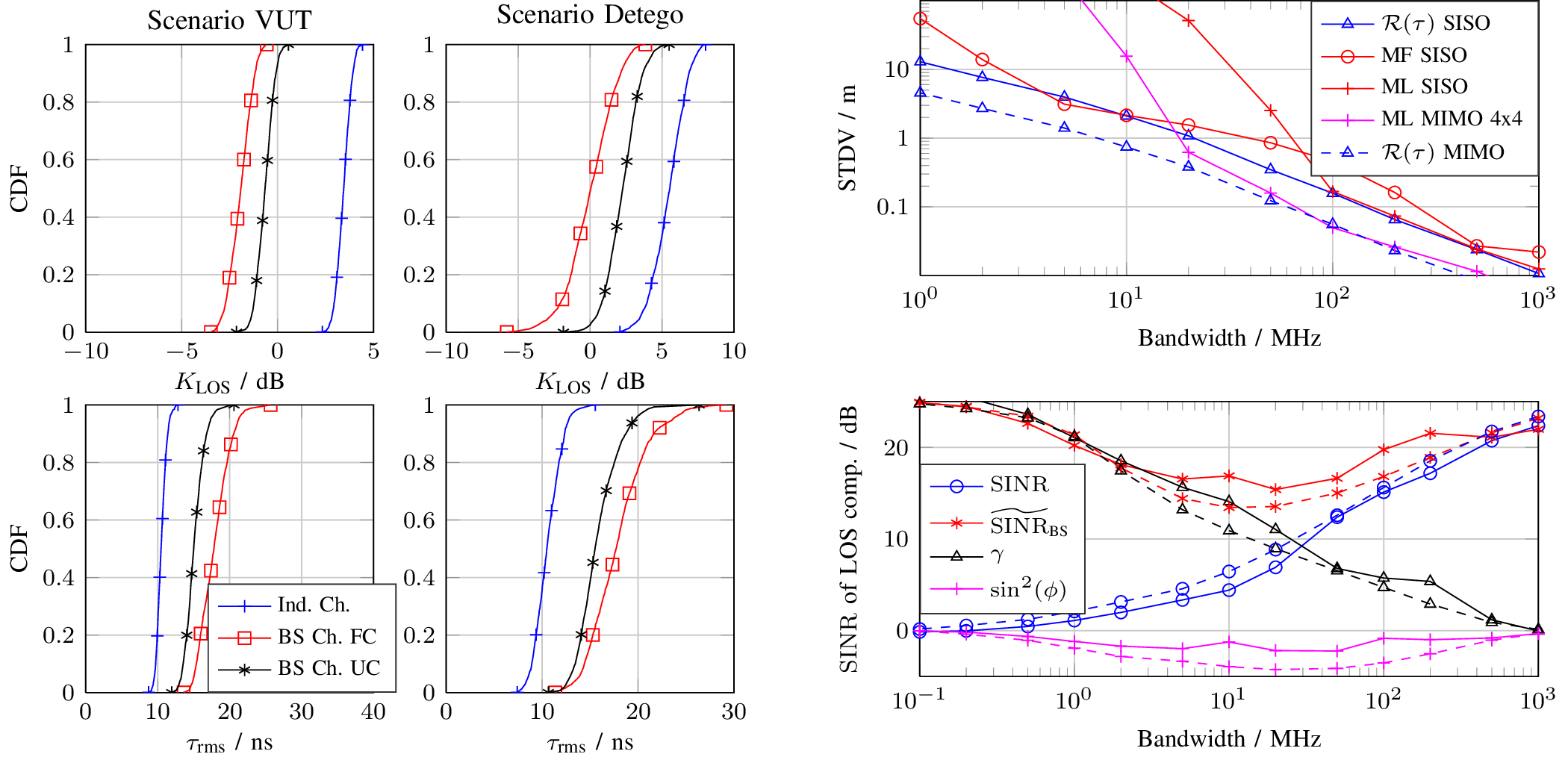UHF-RFID Backscatter Channel Analysis for Accurate Wideband Ranging
- Published
- Thu, Jun 01, 2017
- Tags
- rotm
- Contact

Positioning and ranging within UHF RFID are highly dependent on the channel characteristics. The accuracy of time-of-flight based ranging systems is fundamentally limited by the available bandwidth. We thus analyze the UHF RFID backscatter channel formed by convolution of the individual constituent channels. For this purpose, we present comprehensive wideband channel measurements in two representative scenarios and an analysis with respect to the Rician K-factor for the line-of-sight component, the root-mean-square delay spread, and the coherence distance, which all influence the potential positioning performance.
On the basis of these measurements, we validate the Cramer Rao lower bound for time-of-flight based ranging under the influence of dense multipath and present two types of range estimators, a maximum likelihood and a matched filter approach. The resulting range estimates highlight the need for an increased bandwidth for UHF RFID systems with respect to time-of-flight based ranging.
The left hand side of the figure compares different channel parameters for different measured scenarios: One at Vienna University of Technology (VUT) and one at Detego. The upper left half compares the Rician K-factor for the line of sight component (K_LOS) and the lower right half the root mean square delay spread (t_rms) for different channel configurations. The blue line depicts individual channels (uplink or downlink), the red line shows fully correlated backscatter channels (BS Ch. FC) and the black line uncorrelated backscatter channels (BS Ch. UC). The upper right hand side shows the theoretical limit of the standard deviation (Cramer Rao Lower bound) of any unbiased time-of-flight range estimator for two estimators in a single-input-single-output (SISO) and a multiple-input-multiple-output (MIMO) scenario. The figure shows that with a 4x4 MIMO setup (4 transmitting antennas and 4 receiving antennas) a standard deviation of below 20 cm is possible at a bandwidth of 50 MHz. The lower right hand side shows the signal-to-interference-plus-noise-ratio (SINR) for the VUT scenario at different bandwidth. In general a higher SINR is better for ranging and positioning. Details regarding the SINR, etc. can be found in our paper.
Browse the Results of the Month archive.
